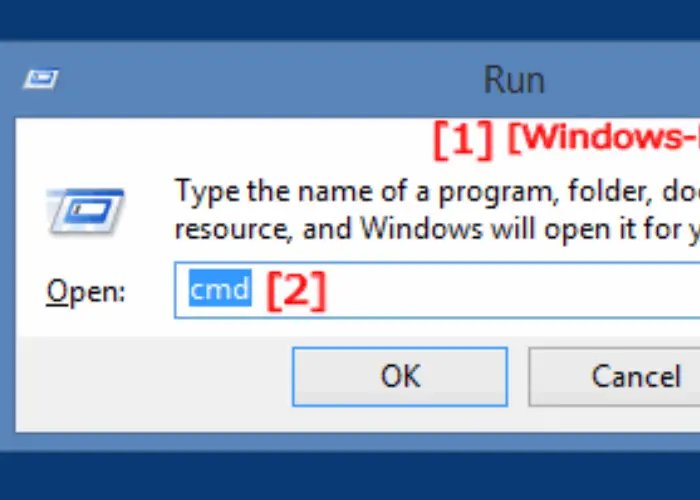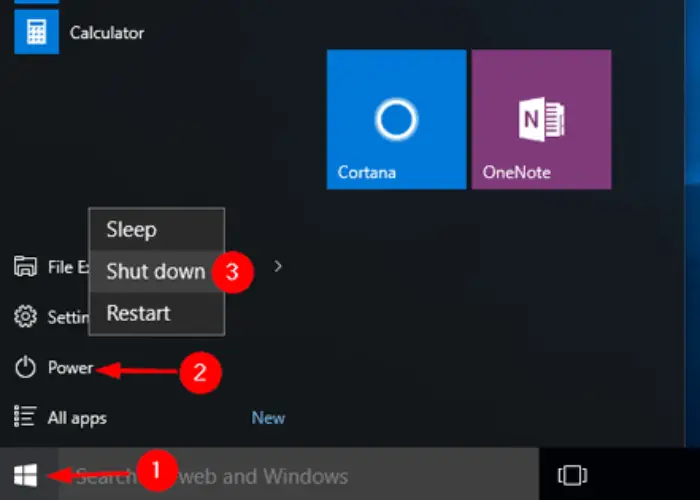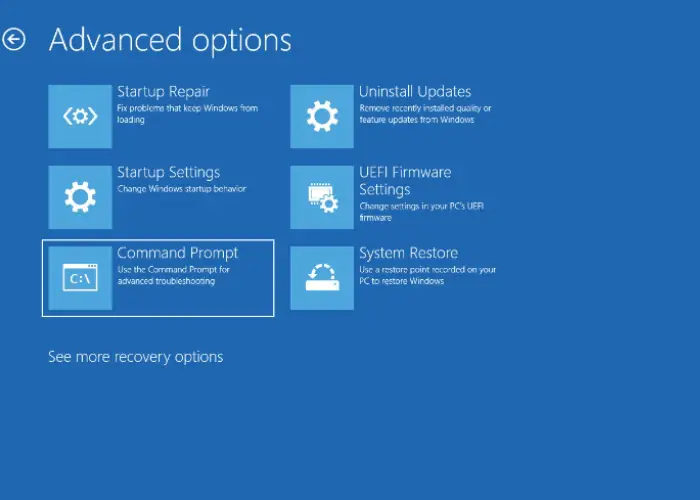This article will discuss how to fix the “There Is A System Repair Pending Which Requires Reboot To Complete” error in Windows 10. A notification indicating a system repair pending, which requires a reboot to complete, signifies that No system-level activities are allowed until the repair is finished. A reboot usually resolves this.
When an SFC scan has been initiated, this issue manifests on a Windows computer. System File Checker, or SFC, is a utility that identifies and corrects problems with system files. The case arises when this error message appears after you attempt to execute the scan.
The SFC system repair pending files left over from earlier system repairs is visible when the SFC is run. Restart your PC if a system repair operation has been sent off to check whether the issue has been fixed. In every other case, use the strategy below. Also, you can fix automatic repair errors on your pc by reading this article.
See Also: How To Fix NVIDIA Control Panel Missing in Windows 10/8.1/8/7
Fixes For “There Is A System Repair Pending Which Requires Reboot To Complete”
Here are some solutions to your problem:
Use The Command Prompt To Delete The Following Files
These files, which may have become corrupt, keep track of ongoing system repair operations on your computer. The pending processes will be reset by deletion, so the system won’t believe that a system repair procedure is in progress. If a system repair is pending Windows 10, which needs a reboot to complete, remove these files, and correctly execute SFC, adhere to the methods listed below.
- Using Windows 10, you can find Command Prompt quickly by hitting the Start menu. Or the Search button nearby, then typing “cmd” or “Command Prompt,” as appropriate.
- Click the right mouse button on the first result and select Run as administrator.

- If you use a more seasoned version of Windows than Windows 10, the Start menu search may or won’t work as expected. However, you can, in any case, explore C >> Windows >> System32, right-click on the “cmd.exe” section, and pick Run as Director.
- To delete these files, enter or copy the two commands below. Make sure to experiment with this by changing the drive letter in the first command to both the letter “d” and “c.” del d:\windows\winsxs\pending.XML or del x:\windows\winsxs\pending.xml
- After seeing the message, “operation completed successfully” in Command Prompt, ensure to finish the SFC scan by following the instructions in this slightly modified version. sfc /SCANNOW /OFFBOOTDIR=c:\ /OFFWINDIR=d:\Windows
- Verify that SFC has now finished successfully.
Alter BIOS Settings
Some claim that switching the SATA operation settings from AHCI or another mode to IDE mode was enough to fix the pending system repair requiring a reboot issue. Check out the technique below!
- Select Shut Down from the Start Menu’s Power Button menu to shut down your computer.

- Restart your computer and attempt to access the BIOS settings by pressing the BIOS key as the system boots up.
- The BIOS key usually is visible on the reboot repair screen and says, “Press __ to begin Setup.” There are more ways it could be shown. F1, F2, Del, Esc, and F10 often use BIOS buttons; therefore, click them quickly.
There is no standard location for the SATA option on BIOS firmware tools produced by different manufacturers; instead, It is under various tabs. Typically, it is found under the Advanced tab, the Integrated Peripherals section, or the Onboard Devices item. SATA operation is the name of the option, regardless of location. Read this article to fix if your Windows Ten can’t connect to the network.
Once you’ve found the correct settings, switching from AHCI, RAID, or ATA to IDE is the most practical course of action, as a system repair is pending, requiring a reboot to complete the procedure. You can quickly undo your changes in the exact location.
Select Exit Saving Changes under the Exit section. After that, The Boot shall be positioned. Make sure to attempt running the update once again.
See Also: 6 Ways to Fix GeForce Experience Won’t Open in Windows 10
Update Your Drivers (Graphics Card Especially)
To fix “there is a system repair pending which requires a reboot to complete,” BSODs (Blue Screens of Death) is a sure sign that one of your outdated drivers is the source of these problems. Therefore, you should update it immediately if they follow the SFC error.
- Select “device management” from the search lists after clicking Start and typing it.
- Utilizing Windows Key + R, type “devmgmt. MSC” if you’re using an older version of Windows, and click OK.
- Find your device’s name by expanding one of the categories, then right-click (or tap and hold) on it and choose Update Driver.
- Grow the Display Adapters classification for graphics cards, then, at that point, right-click your graphics card and pick Update Driver. Can’t sign in to your account in Windows 10 and want to fix it? Click here.
- Choose Automatically check for driver software updates.
- Try looking for a new driver on the device’s manufacturer’s website and following their instructions if Windows cannot do so. Click here, If your application has been blocked from accessing graphics hardware.
See Also: 4 Ways to Fix AMD Radeon Settings Won’t Open
Fix The Issue In The Recovery Environment
One of the most complicated steps for fixing “there is a system repair pending which requires a reboot to complete” requires much troubleshooting. Although Windows 10 makes it easier to access the recovery environment, the commands we’ll use can only be run from there. Please carefully follow the instructions below. These commands are safe and can resolve the issue. Read this article to fix faulty hardware corrupted pages in Windows.
- Press the Shift key while restarting on the login screen’s Power icon. It is an excellent shortcut to get to the Recovery menu without inserting your DVD.
- A blue screen with options will display in place of the restart button. To open the tool, select Troubleshoot >> Advanced Options >> Command Prompt on your machine.

- One at a time, type the following commands and wait for them to complete. One of them should resolve your issue, but be sure to follow the same order. bcdboot C:\Windowsbootrec /FixMBRbootrec /FixBoot
- Start your computer, and then use SFC to determine. Want to secure your Windows 10? Read this article.
See Also: 6 Ways to Fix Nvlddmkm.Sys Error on Windows 10
Modifying The Registry
Here is a registry key that maintains track of a system repair pending that needs a reboot to complete programs. Deleting it results in the loss of this queue and will stop Windows from believing a process is seeking a reboot when there isn’t one.
- Because you will alter the register, we advise you to read this article on how to back up your registry to avoid further issues. However, if you correctly follow the instructions, nothing will go wrong.
- Write “regedit” in the dialogue box. Navigate to the following key in Registry Editor by choosing it in the left pane: HKEY_LOCAL_MACHINE\SOFTWARE\Microsoft\Windows\CurrentVersion

- Ensure that you right-click on the RebootPending key under the CurrentVersion key and select Permissions from the menu that appears.
- Look for your username in the list of groups or user names under that area. If you fail, select Add >> Advanced >> Find Now. Your user account should be listed under the Search results section; pick it and click OK twice to return to the Permissions folder.
- Search your username in the rundown under the “Group or user names” section. In the Permissions for the area, select the Full Control checkbox. Then, apply your modifications.
- Right-clicking the RebootPending key creates a context menu where you may choose Delete. To apply the changes, confirm the dialogue box that appears and restart your computer. See if the issue “there is a system repair pending which requires a reboot to complete” remains.
See Also: 10 Ways to Fix Video Scheduler Internal Error in Windows 10
FAQS
How to fix SFC/scannow won't start?
To bring up, press Win + R. Run the dialogue box and enter the command to launch the Command Prompt. Press Enter after typing Dism /Online /Cleanup-Image /restorehealth. If the system asks, log in using your administrator username and password. Restart your computer to maintain modifications and get the SFC back up and running.
How may unbuildable boot records in Windows 10 be fixed?
Boot into the Windows Recovery Environment using the Windows 10 DVD. Select Fix your computer. Select Troubleshoot from the Advanced menu. Choose Command Prompt. Enter the key after each of the following commands you enter into the prompt. Bootrec /fixboot, Bootrec /scans, Bootrec /rebuildbcd, and Bootrec /fixmbr Restart your computer.
How do I check for pending restart/reboot?
If any situations in this table apply, a Windows PC will soon reboot. There are a variety of styles to check registry data once you've mastered each technique for looking for an impending reboot. These techniques might also be available in WMI if installed by the Microsoft System Center Configuration Manager (SCCM) client.
Why does Windows 10 keep asking me to reboot?
Windows frequently reboot after program installation, software upgrades, or configuration changes. It occasionally needs to reboot due to a variety of OS operations. Windows updates a few registry entries to indicate when a reboot is about to occur.
See Also: Fix : Feature Update To Windows 10 Version 1903 – Error 0x80080008
Conclusion
To summarize, this post provided five excellent remedies for the issue with SFC/scannow reporting that a system repair is pending, which requires a reboot. Fortunately, the SFC error is easily reversible.
There should no longer be an issue. If you ever find yourself in a scenario where a system repair is ongoing, and a reboot is necessary to finish it, give these solutions a shot.
See Also: Font Not Showing Up in Word Mac- Step-by-Step Guide
Aloukik Rathore is a Delhi-based entrepreneur, musician, writer, and tech nerd. He has been blogging for about 7 years now.

